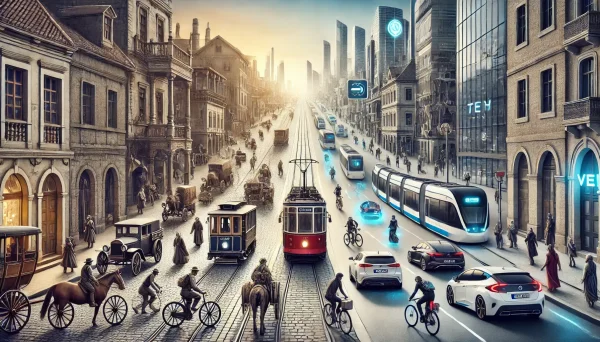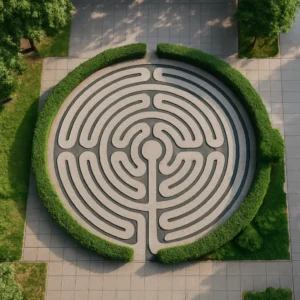Urban transportation has always played a central role in shaping the life and structure of cities. From ancient footpaths to modern electric trains, the way people move through urban environments reflects broader changes in technology, economy, culture, and society. Over the centuries, transportation has not only connected people and places—it has defined how cities grow, how neighborhoods function, and how time is experienced in daily life. Here’s a journey through the fascinating evolution of urban transportation and how it transformed cities around the world.
Foot Traffic and the First Cities
In ancient cities like Ur, Athens, and Rome, transportation was entirely pedestrian. Streets were narrow and winding, designed for foot traffic and small carts. Most people lived near where they worked or traded in local markets. Movement was local, and city design was compact, with dense neighborhoods and communal gathering areas.
Animal-Powered Transport
As cities grew, so did the need for carrying goods and people over longer distances. Donkeys, horses, and oxen became essential for urban movement. In cities like ancient Rome, chariots and carts shared space with pedestrians, and regulations were introduced to manage congestion. The development of roads, like Rome’s famed Viae, helped organize urban flow and linked cities together.
Waterways and Canals
In cities like Venice, Amsterdam, and Suzhou, water became the primary mode of transportation. Gondolas, barges, and canal boats carried passengers and goods through intricate networks of man-made waterways. These systems defined the spatial layout of such cities and reduced pressure on land-based infrastructure.
Stagecoaches and Carriages
By the 17th and 18th centuries, horse-drawn carriages and stagecoaches became common in major European cities. They were mostly used by the elite and later adapted into early forms of public transport like the hackney carriage in London. These developments also marked the beginning of social stratification in transportation—where wealth defined access and comfort.
The Arrival of the Tram and Streetcar
The 19th century saw the rise of horse-drawn streetcars, followed by steam-powered trams and eventually electric streetcars. Cities like San Francisco, Berlin, and New York developed extensive streetcar systems that allowed middle-class commuters to live farther from the city center, fueling the rise of suburbs. The electric streetcar revolutionized how far and how fast people could travel within a city.
The Subway and Underground Rail
One of the most transformative developments came with the subway. London opened the first underground railway in 1863, followed by cities like Budapest, Boston, and Paris. Subways allowed cities to grow vertically and horizontally without surface-level congestion. They represented technological achievement and urban ambition, changing the daily rhythm of millions.
The Age of the Automobile
The 20th century brought the car to the forefront of urban transportation. As cars became more affordable, cities were redesigned around them. Highways, overpasses, and vast parking lots reshaped urban landscapes. While cars offered freedom and speed, they also contributed to sprawl, pollution, and the decline of walkable neighborhoods. Many historic tram and streetcar systems were dismantled during this time.
Buses and Mass Transit Systems
Buses became a flexible, lower-cost alternative to fixed-track systems. They could reach more neighborhoods and adapt to changing city patterns. Bus Rapid Transit (BRT) systems emerged in cities like Curitiba and Bogotá, proving that innovative public transport doesn’t require massive infrastructure investment. Buses became essential for urban accessibility, especially in developing cities.
Cycling and Pedestrian Revival
In recent decades, many cities have recognized the environmental and social benefits of walking and cycling. Bicycle-sharing programs, pedestrian-only zones, and expanded sidewalks have become common in places like Copenhagen, Amsterdam, and Portland. These changes reflect a shift in thinking—from prioritizing speed to emphasizing livability and sustainability.
Smart Cities and the Future of Urban Transport
Today, the future of urban transport lies in innovation: electric buses, autonomous vehicles, hyperloops, and AI-managed traffic systems. Cities are experimenting with smart mobility solutions that reduce emissions and increase efficiency. Apps have made ride-sharing, bike rentals, and public transit navigation easier than ever. Urban transport is becoming more integrated, data-driven, and environmentally conscious.
Conclusion: Movement as a Mirror of Civilization
The evolution of urban transportation is a reflection of human progress, challenges, and priorities. Each mode of movement, from ancient carts to electric scooters, has shaped how cities are built and how people live in them. As we look toward a future of climate challenges and rapid urbanization, the story of how we move through cities will continue to evolve—carrying with it the hopes, needs, and dreams of each generation







